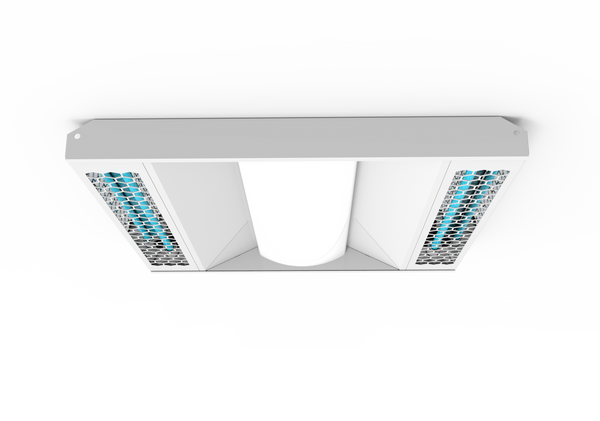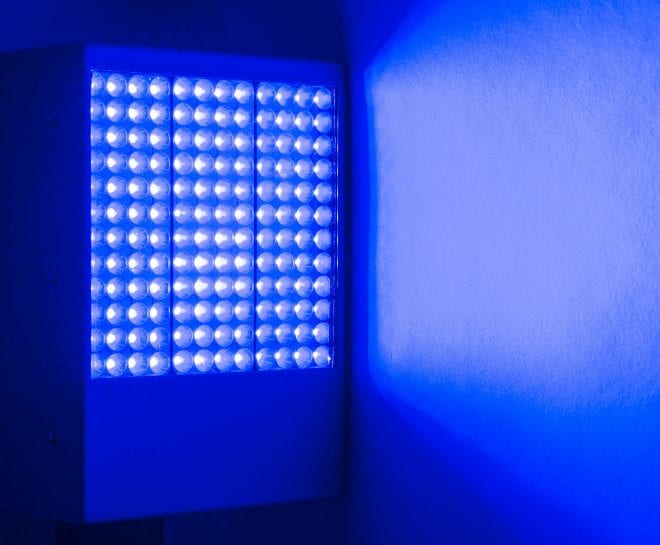UV Surface Disinfection Made Simple: Executing Best Practices for Optimum Results
UV Surface Disinfection Made Simple: Executing Best Practices for Optimum Results
Blog Article
Revealing the Conveniences of UV Disinfection: Making Sure Disinfected and clean Rooms
While traditional cleansing approaches have actually long been depended upon, innovations in modern technology have presented a cutting-edge service that makes sure clean and sterilized rooms: UV disinfection. Additionally, we will certainly dive right into the safety and security factors to consider that need to be taken right into account when implementing UV sanitation. Prepare to discover a brand-new dimension of tidiness and discover the untapped capacity of UV disinfection.

The Science Behind UV Sanitation
UV disinfection is a clinically tried and tested approach that makes use of ultraviolet light to eliminate harmful microbes from surface areas and water. The science behind UV disinfection hinges on the ability of UV-C light to damage the DNA and RNA of microorganisms, rendering them unable to recreate and triggering their ultimate death. UV-C light falls within the wavelength variety of 200 to 280 nanometers, which is highly reliable in ruining bacteria, infections, and various other microorganisms.
When exposed to UV-C light, the genetic product of bacteria absorbs the energy from the light, leading to the development of thymine dimers. These dimers disrupt the regular duplication and transcription procedures of the microorganisms, preventing their capability to make it through and replicate (uv surface disinfection). The DNA and RNA damage triggered by UV-C light is deadly to the bacteria, making UV sanitation a reliable and trustworthy approach for eliminating a wide range of pathogens
UV disinfection is specifically helpful in settings where standard chemical disinfectants might be inadequate or not practical. It is a non-chemical approach that does not leave any deposits or dangerous spin-offs, making it secure for usage in food processing, health care facilities, water therapy plants, and numerous other industries. UV sanitation is eco friendly, as it does not contribute to the growth of antibiotic-resistant microorganisms or other damaging contaminants.
Efficiency of UV Disinfection on Pathogens
The efficiency of UV sanitation in removing virus has actually been extensively researched and shown in many clinical researches. UV radiation has the ability to suspend a wide variety of bacteria, consisting of fungis, infections, and microorganisms, by damaging their DNA or RNA. This avoids them from replicating and causing infections.
One study published in the American Journal of Infection Control found that UV sanitation was efficient in reducing the presence of numerous drug-resistant germs in health center rooms. One more research performed by the National Institute for Occupational Security and Health and wellness demonstrated that UV disinfection had the ability to eliminate 99.9% of the flu virus on surface areas.
UV sanitation has actually additionally revealed pledge in combating the spread of healthcare-associated infections (HAIs) According to a research published in The Lancet, the usage of UV-C light in enhancement to standard cleansing procedures substantially reduced the incidence of HAIs in a medical facility setup.
Moreover, UV disinfection has proven to be reliable against emerging virus, such as the severe acute respiratory system disorder coronavirus 2 (SARS-CoV-2), which triggers COVID-19. A research conducted by the National Arising Contagious Illness Laboratories showed that UV-C light can inactivate the infection on surface areas within seconds.
Applications of UV Disinfection in Different Settings
With its tried and tested efficiency in getting rid of microorganisms, UV disinfection has found applications in a selection of setups. Among the most common locations where UV disinfection is used is in healthcare facilities. UV technology is utilized to disinfect patient spaces, operating rooms, and other high-touch surfaces, lowering the danger of healthcare-associated infections. On top of that, UV disinfection is additionally being executed in food processing plants and restaurants to guarantee the security of food items and avoid the spread of foodborne ailments. UV disinfection is additionally useful in water treatment plants, where it is utilized to eliminate hazardous microorganisms and supply safe alcohol consumption water.
Another crucial application of UV disinfection impends filtration market. UV air cleansers are utilized in property, commercial, and commercial settings to get rid of airborne bacteria, viruses, and mold spores. This modern technology is especially valuable in settings where people are more vulnerable to respiratory system infections, such as hospitals, colleges, and workplace structures.
In addition, UV sanitation is increasingly being utilized in public transportation systems, such as buses and trains, to preserve tidy and sanitized rooms for travelers. UV light is utilized to disinfect surface areas and air inside the vehicles, reducing the threat of spreading contagious illness.
Advantages of UV Disinfection Over Standard Methods
In comparison to standard approaches, UV disinfection offers a variety of distinct benefits that make it a better option in numerous sectors and settings. One considerable benefit is its effectiveness against a vast variety of bacteria, including fungis, viruses, and germs. Unlike chemical disinfectants that might have restricted effectiveness against particular virus, UV disinfection is a discover this info here non-selective process that can kill or inactivate a broad spectrum of dangerous organisms.
Another benefit of UV disinfection is its ability to offer fast and efficient sanitation. Typical sanitation methods typically require longer get in touch with times or several actions to attain the desired degree of sanitation. On the other hand, UV light can offer continual and instant sanitation, decreasing downtime and boosting performance in various applications.
UV sanitation additionally supplies a environmentally friendly and secure alternative to typical sanitation methods. uv surface disinfection. Unlike chemical representatives, UV light does not leave any hazardous residues or byproducts, making it appropriate for usage in sensitive atmospheres such as food processing facilities, medical care setups, and water therapy plants
Furthermore, UV disinfection is an economical solution in the future. While the upfront investment for UV disinfection systems may be greater than standard approaches, the functional costs are generally reduced. UV lamps have a long life-span and need minimal upkeep, resulting in minimized labor and substitute costs.
Safety Considerations for UV Disinfection
Taking into consideration the prospective risks connected with UV sanitation, it is vital to deal with the safety and security considerations associated with executing this innovation. UV disinfection uses ultraviolet light to kill or inactivate microbes, making it an effective approach for sanitizing different surface areas and things. Nevertheless, click to find out more it is important to recognize that UV radiation can additionally position threats to human health and wellness if correct precaution are not adhered to.
Firstly, direct exposure to UV radiation can trigger Continued injury to the skin and eyes. Prolonged exposure can bring about sunburn, skin damage, and also a boosted risk of creating skin cancer. It is important to guarantee that UV sanitation systems are appropriately confined and geared up with safety features such as automatic shut-off mechanisms or motion sensing units to prevent unexpected exposure.

In addition, proper training and education and learning are crucial for those accountable for running UV sanitation systems. They need to understand the potential dangers, comprehend the safety protocols, and understand how to take care of and maintain the tools correctly.
Verdict
UV disinfection can be applied in numerous setups, consisting of medical care facilities, food processing plants, and water therapy systems. Compared to typical approaches, UV disinfection has advantages such as faster sanitation times, marginal chemical usage, and no hazardous results.
UV disinfection is a clinically proven technique that uses ultraviolet light to get rid of hazardous bacteria from surfaces and water. The DNA and RNA damages caused by UV-C light is lethal to the microorganisms, making UV sanitation a efficient and reputable technique for killing a large array of microorganisms.
Another benefit of UV disinfection is its ability to give efficient and rapid sanitation. UV disinfection uses ultraviolet light to eliminate or inactivate bacteria, making it a reliable method for disinfecting different surfaces and objects. Compared to standard techniques, UV disinfection has advantages such as faster disinfection times, very little chemical use, and no damaging by-products.
Report this page